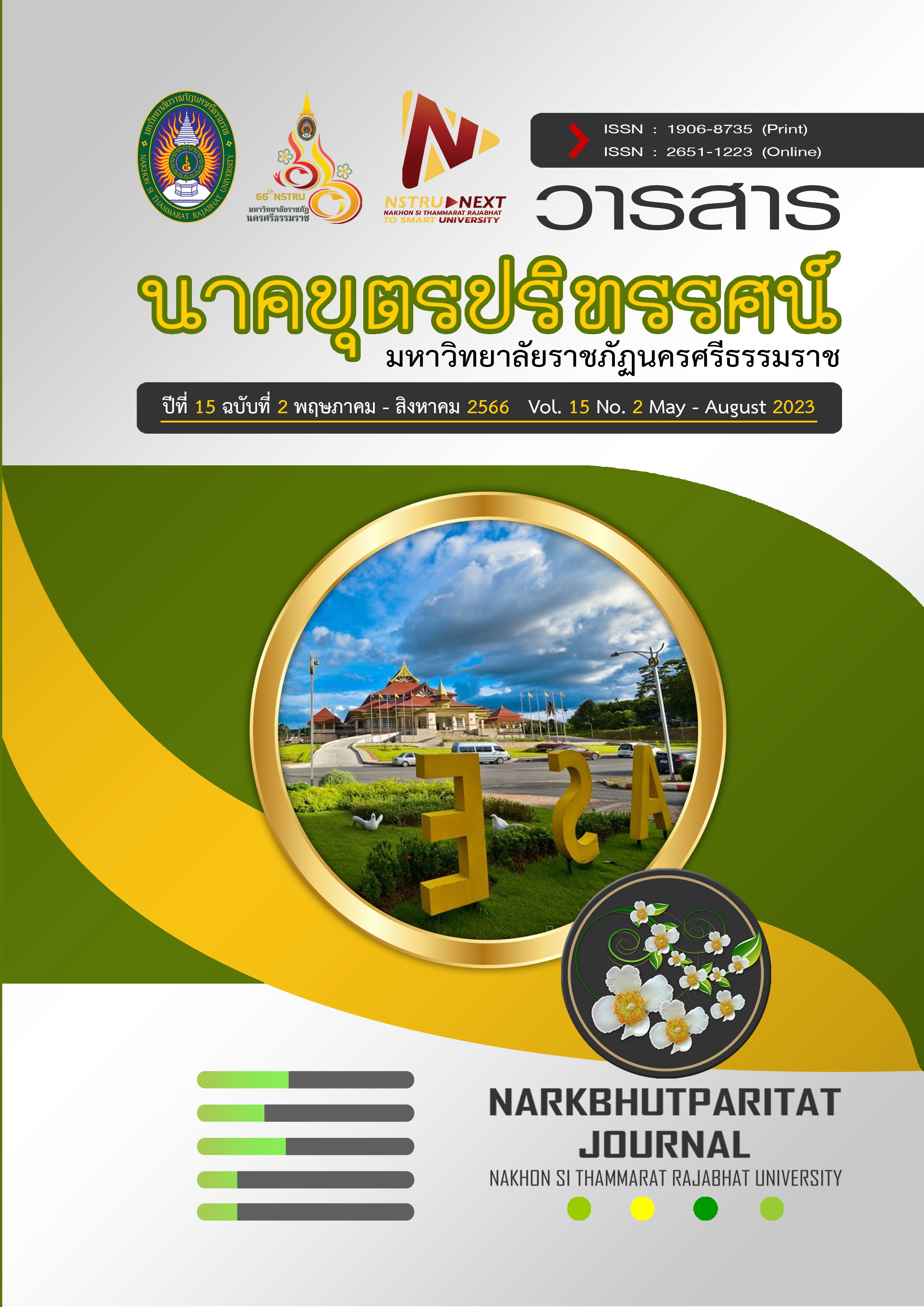Pak Phun Historical Capital for Local pride and Resource Restoration
Main Article Content
Abstract
The objectives of this article are to study: 1) perceptions about the Greater East Asia War in case of the landing of the Japanese soldiers in the Pak Phun municipality, 2) the mass evacuation of people from the Ban Laem District, Phetchaburi Province came to make a living in the Pak Phun Municipality, and 3) resource recovery by doing “Community Mram”. It is qualitative research focusing on historical methods, including documentary and field study interviews, focus groups, and a meeting to verify the information.30 key informants were community leaders, local philosophers, elders, and professional groups. The results showed the history of Pak Phun municipality is the common memory of the people in the area, namely the landing of Japanese troops during the Greater East Asia War on December 8, 1941. The mass evacuation for seeking new arable land. Some villagers migrated from the Ban Laem District, Phetchaburi Province. The immigration took place in the 1920s. These groups of immigrants still retain their identities, both language and local fishing and the history of the memory of local fishery in the past is called making "Mram" (fish houses). The three issues of local history led to the creation of a sense of belonging and local pride among the participants in the research process, resulting in the application of the wisdom of the immigrants to restore resources through community practice. There are catfish rum and snapper rum. As a result, marine animals can be used as habitats and lay eggs. In addition, the community has worked together to take care of the restoration of resources. They can be proud of the shared historical capital.
Article Details

This work is licensed under a Creative Commons Attribution-NonCommercial-NoDerivatives 4.0 International License.
References
th Army Area. (1991). 50 years Veerathai. Nakhon si thammarat: 4th Army Area. (in Thai)
Aemwat, N. (2021). Interview, 23 October 2021. (in Thai)
Buasai, S. (2004). Local Power: A Synthesis of Community Research. Bangkok: The Thailand Research Fund. (in Thai)
Chawasit, K. (2021). Village Headman, Moo 4 Pakphun Sub-district, Muang District, Nakhon Si Thammarat Province. Interview, 13 November 2021. (in Thai)
Chuwaen, Y. (2019). Rescue a Thai local history. Bangkok: Gipsy Group. (in Thai)
Ganjanapan, A. (2019). Complex thinking in community research: dynamics and potential of communities in development. Bangkok: The Thailand Research Fund (TRF). (in Thai)
Khunweechuay, M. (2017). Local curriculum: concept to action. Nakhon si thammarat: Green Zone Publishing. (in Thai)
Khunweechuay, M., & Khunweechuay, N. (2010). The evacuation history of Pak-Poon Community, Muang District, Nakhon Si Thammarat Province (Research report). Department of Culture Promotion. (in Thai)
Khunweechuay, M., & Thammakirati, K. (2018). The Persistence of Pak Poon Village Fishery: The Analysis of Dynamics in The Past.
Narkbhutparitat Journal. 10(2), 116-126. (in Thai)
Naksupha, C., & Chanikonpadit, P. (1997). History of villages economy of Southern Thailand. Bangkok: Sangsan Publishing. (in Thai)
Satayanuruk, A. (2002). A study of the state of knowledge in history on ecology and environment. Bangkok: Kobfai Publishing Project. (in Thai)
Tanoamchard, W., Unphim, U., & Joungtrakul, J. (2020). Presentation of Qualitative Research Findings. NRRU Community Research Journal, 14(4), 1-13. (in Thai).


